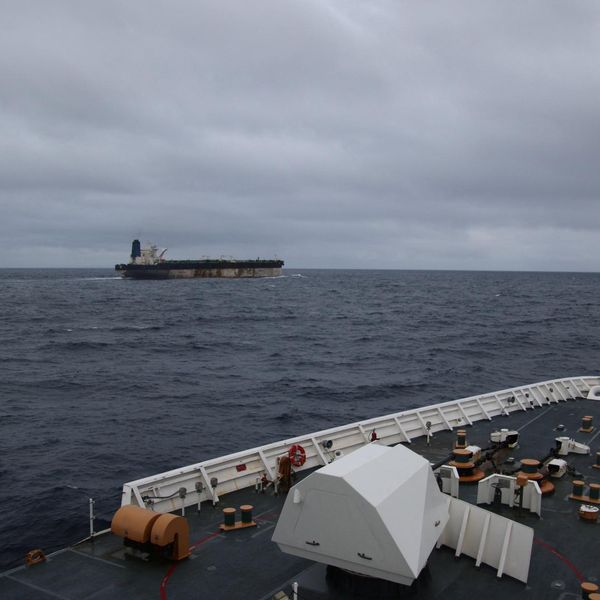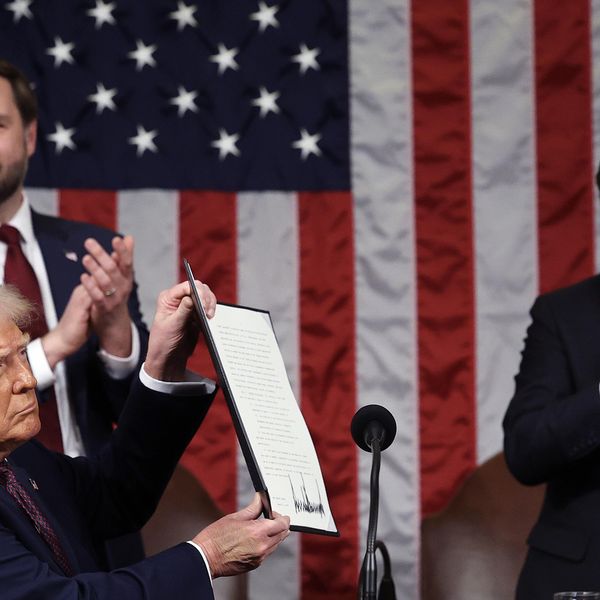Following the assassination of Qassem Soleimani, war with Iran appears more likely than ever. Whether the conflict remains contained to proxies or escalates into full-on confrontation between U.S. and Iranian forces, Americans are likely to die as a result of Trump’s decision to kill Soleimani.
The best way to reduce the risk of war is to get U.S. troops out of Iraq. Those currently stationed in Iraq are most vulnerable to attack from Iran and Iran-allied groups. Soleimani’s assassination significantly elevated the risk to Americans in Iraq, (as acknowledged by the Trump administration when it instructed Americans to leave).
The crisis Trump created could also provide an opportunity. Trump and American policymakers can now act in the direct interests of the United States while also improving relations with Iraq, a key regional partner.
The Iraqi parliament passed a non-binding resolution on Sunday to cancel its military aid request to coalition forces, effectively reversing its 2014 invitation for U.S. troops to deploy to Iraq to fight and contain ISIS. Arguably, once ISIS had been deprived of all strategic territory as of December 2017, the U.S. should have pulled out, their mission accomplished.
The Iraqi parliament vote provides cover for the U.S. military to gracefully exit Iraq now. Removing U.S. troops affirms the authority of Iraq’s parliament, while simultaneously reducing the threat to American lives. Moreover, withdrawing from Iraq reduces the likelihood of further escalation with Iran, while improving the U.S.-Iraq relationship, which had frayed the longer the U.S. stayed beyond its stated mission.
If U.S. troops in Iraq are attacked by Iran, the Trump administration will feel compelled to respond, and the U.S. will soon be fighting yet another war in the Middle East. Current circumstances are even more inclined towards war than the conditions that preceded the U.S. invasion of Iraq in 2003, which was not precipitated by an attack on U.S. forces.
The current U.S.-Iran relationship exhibits alarming parallels to U.S. relations with Iraq prior to the 2003 invasion. The U.S. had imposed heavy sanctions on Iraq, and was concerned about Iraq acquiring or possessing weapons of mass destruction. Iraq’s leadership was seen as cruel, dictatorial, and illegitimate, which allowed Bush administration officials to claim the U.S. would be welcomed as “liberators.”
Also similar to Iraq, the U.S. could probably defeat Iran in a conventional war. Yet the U.S. would face massive opposition and likely armed insurgency if it invades Iran, just like it did in Iraq.
Like with Iran now, the U.S. had no official diplomatic relations with Iraq between 1990 and 2003. U.S. officials had very little information about Iraqi society and in lieu of diplomatic expertise, the Bush team relied on a group of Iraqi exiles who were eager for the U.S. to overthrow Saddam Hussein’s government. Yet these individuals had themselves been out of Iraq since the 1980s, had no support base within the country, and had no more accurate information about circumstances in Iraq than U.S. officials.
The exact same dynamics — the lack of understanding of state and society, of regime dynamics, of potential post-conflict evolution, and reliance on exiles with no public support inside the country — are present in Iran.
Moreover, war with and possible invasion of Iran would present greater difficulties than Iraq. Iran has a larger population and bigger GDP, despite sanctions. The Iranian government has greater legitimacy than Saddam Hussein’s regime. Anti-government protestors have vanished in the wake of Soleimani’s assassination, replaced by massive expressions of national unity and calls for retaliation against the U.S.
As in Iraq, the neoconservative agenda calls for regime change in Iran. Yet the decision to dismantle the Baathist regime and disband the Iraqi military led to the rise of ISIS. Although these choices are widely seen as some of the worst foreign policy blunders in recent American history, the U.S. is on the brink of implementing the same approach. To “make Iran safe for democracy,” the entirety of the Iranian government and military would have to be demolished, similar to the policies implemented in Iraq. These actions, while not only requiring a huge coercive force and vast resources, would likely provoke even stronger resistance from Iranian society. Any military action would automatically bolster nationalism, already a potent force in Iran.
Conventional wisdom has it that Trump would rather avoid an all-out war with Iran and prefer instead to focus on re-election. He knows that his base likes when he puts “America First” by beating up on Iran on Twitter, but that is different from getting into what would be a messy, volatile, long-term conflict — and he knows it. However, Trump also knows that if U.S. soldiers were attacked by Iran — and a media narrative absolves Trump of responsibility for starting this whole mess — his base would rally around him. No war-time president has ever lost re-election. Although Trump has thus far managed to avoid provoking all-out war, the impeachment may have spurred him to adopt more extreme means of distraction.
The presence of U.S. troops in Iraq makes war with Iran significantly more likely. It was the continued presence of U.S. troops in Iraq that helped lead to the circumstances in which a U.S. military contractor was killed, provoking retaliatory airstrikes, and setting off a cascade of events resulting in the storming of the U.S. Embassy complex in Baghdad, which then apparently prompted the decision to target Soleimani.
There is a brief window within which American service members can be made more secure by withdrawing them from Iraq. This must occur before Iran or its allies attack them, and the U.S. is drawn into another war in the Middle East, one that is even more costly and destructive than the war in Iraq.
The on-going presence of American troops in the region does not enhance U.S. or regional security; it makes Americans more vulnerable to attack and further mired in endless wars in the region. That was true before the assassination of Soleimani, it is even more true today. It’s time to bring the troops home to safety.
















